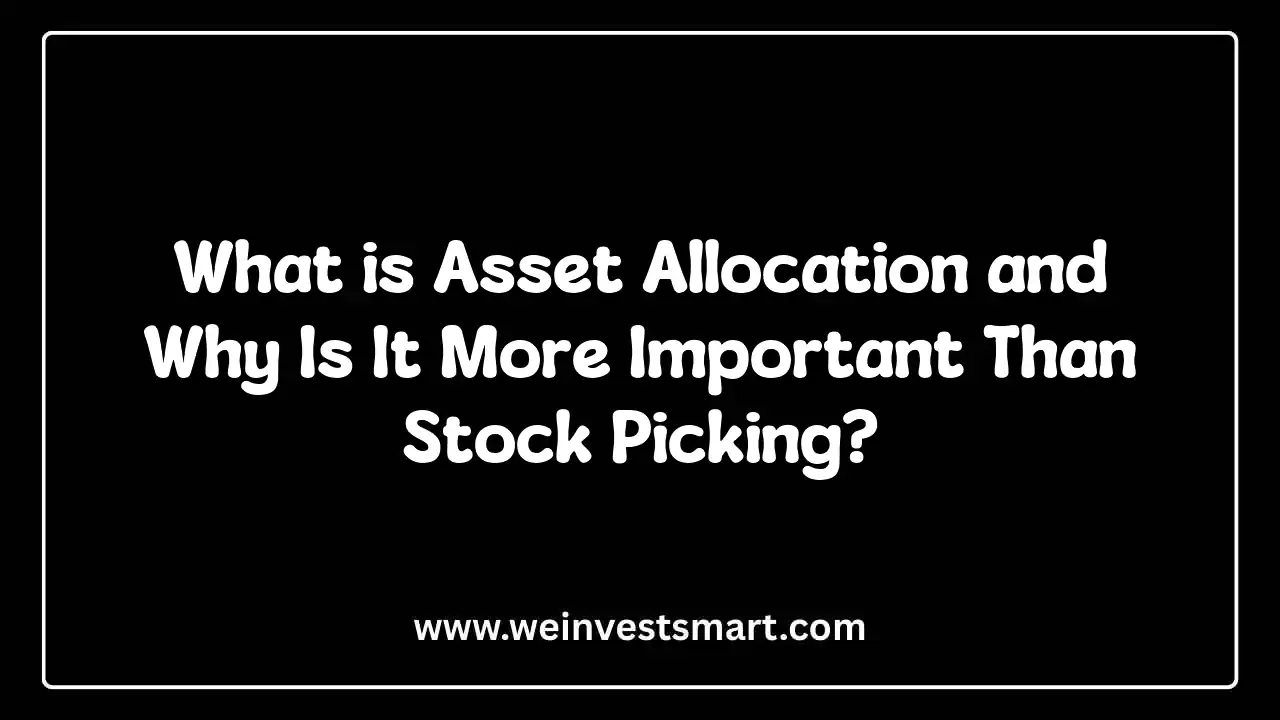· WeInvestSmart Team · investment-strategies · 9 min read
The Permanent Portfolio: An All-Weather Strategy for Volatile Times
Tired of market volatility? Discover Harry Browne's Permanent Portfolio, a simple but powerful strategy that divides your assets equally into stocks, bonds, gold, and cash to weather any economic storm—be it inflation, recession, or prosperity.
Every investor is forced to be an amateur fortune-teller, and it’s a job we’re all terrible at. We are constantly bombarded with conflicting predictions: inflation is coming, no, deflation is the real threat; the economy is heading for a soft landing, no, a brutal recession is inevitable. But here’s the uncomfortable truth: your entire financial future is likely balanced on a portfolio that is designed to perform well in only one of these potential futures—a state of stable, predictable growth.
Going straight to the point, this is like building a house in California that is only designed to withstand sunny weather, with no thought given to earthquakes or wildfires. It’s a recipe for disaster. Most investment advice implicitly assumes the good times will keep rolling. But what happens when they don’t?
But what if you could build a portfolio that didn’t require a crystal ball? A strategy that was designed from the ground up to be resilient, no matter what the economic weather looks like? Here’s where things get interesting. Such a strategy exists, and it was conceived decades ago by a brilliantly pragmatic thinker named Harry Browne. He called it the Permanent Portfolio, and it is a masterclass in financial humility. And this is just a very long way of saying that you can stop trying to predict the future and start preparing for it.
The Absurd Game of Economic Prediction
To understand the genius of the Permanent Portfolio, we first need to appreciate the futility it’s designed to overcome. The financial industry is built on the illusion of foresight. Pundits and experts make bold proclamations with unwavering confidence, only to quietly change their story a few months later. The funny thing is that we continue to listen, holding ourselves to the absurd standard of needing to know what will happen next with interest rates, GDP, and inflation.
This constant guessing game is exhausting and, more importantly, financially dangerous. A portfolio heavily weighted in tech stocks gets crushed when inflation spikes and interest rates rise. A portfolio of long-term bonds, long considered “safe,” gets decimated in the same inflationary environment. We are constantly reacting, trying to shift our bets to the next winning horse, often arriving just as the race is ending.
So, what do we do? We must accept a simple, liberating truth: we don’t know what the future holds, and neither does anyone else. The solution isn’t to become a better forecaster, but to build a portfolio that is indifferent to the forecast.
You may also be interested in: How to Build a Dividend Portfolio for Passive Income: A Step-by-Step Guide
The Four Economic Seasons: A Blueprint for Resilience
Here’s where Harry Browne’s insight becomes so powerful. To understand it, we need to go to the heart of the problem: while the economy is infinitely complex, it can generally be simplified into four basic “seasons” that dictate how your investments will perform.
- Prosperity: A healthy, growing economy with low inflation. This is the “sunny weather” everyone hopes for.
- Inflation: A period of rising prices, where the purchasing power of your money is actively eroding.
- Recession/Deflation: A period where the economy shrinks, unemployment rises, and prices may even fall.
- Tight Money/Financial Crisis: A period where interest rates rise sharply or an unexpected shock hits the financial system, causing a panic.
Browne’s brilliant idea was this: instead of guessing which season is coming next, why not own an asset that is specifically designed to thrive in each one? This sounds like a trade-off, but it’s actually a desirable thing. You are intentionally giving up on trying to maximize returns in any one season in exchange for the certainty of surviving, and even profiting, through all of them.
You may also be interested in: Investing with Your Conscience: An Introduction to ESG and Socially Responsible Investing
Deconstructing the All-Weather Machine: 25/25/25/25
Going straight to the point, the Permanent Portfolio is constructed with radical simplicity. You divide your capital into four equal 25% slices, with each slice dedicated to a powerful, distinct asset class designed to protect you during one of the four economic seasons.
25% in Stocks (for Prosperity)
This is your engine of growth. When the economy is expanding and businesses are thriving, stocks are the clear winner. This portion of the portfolio is designed to capture the significant upside of human ingenuity and economic progress. A simple, low-cost total stock market index fund (like VTI) is all you need here. This is your bet on the good times.
25% in Gold (for Inflation)
This is your protection against currency debasement. During periods of high inflation, the value of paper money declines. Gold, as a tangible asset with a history stretching back millennia, tends to hold its value or even increase during these times. It is the ultimate hedge when faith in government-issued currency wavers. When everyone else’s cash is losing value, your gold is designed to shine.
25% in Long-Term Treasury Bonds (for Deflation/Recession)
This asset is perhaps the most counterintuitive, but it’s a critical component. During a serious recession or a deflationary bust, central banks typically slash interest rates to stimulate the economy. This makes existing long-term bonds with higher yields suddenly much more valuable, causing their prices to soar. As investors flee risky assets like stocks, they rush into the safety of government bonds, further driving up their price. This is your primary defense when the economy contracts.
25% in Cash/T-Bills (for a Crisis)
Cash is your ultimate safe haven. During a financial crisis or a “tight money” scenario where interest rates are rising and liquidity dries up, cash is king. It experiences zero volatility, protects you from forced selling of other assets at fire-sale prices, and acts as “dry powder” that allows you to rebalance and buy other assets when they are cheap. In a world of chaos, cash provides stability and opportunity.
You get the gist: the portfolio holds four deeply different assets that are designed to have low or even negative correlations with each other. When stocks are crashing, your bonds are likely soaring. When your cash and bonds are being eaten by inflation, your gold is likely surging. One component is always on duty, protecting the whole.
You may also be interested in: Your Guide to the Alphabet Soup of Retirement: 401(k) vs. Roth IRA vs. Traditional IRA
The Permanent Portfolio in the Real World
This theory is elegant, but how does it actually perform? Let’s look at a few historical stress tests.
- The High-Inflation 1970s: This was a lost decade for traditional stock and bond investors. From 1973 to 1981, inflation ran rampant. A 60/40 portfolio was crushed. But in the Permanent Portfolio, the 25% allocation to gold was the hero, skyrocketing in value and generating strong positive real returns for the entire strategy while others were sinking.
- The 2008 Global Financial Crisis: This was a brutal deflationary shock. The S&P 500 lost over 37%. However, the Permanent Portfolio’s 25% allocation to long-term Treasury bonds had one of its best years in history as the Federal Reserve cut interest rates to zero. The portfolio as a whole barely registered a loss, providing incredible stability in a storm.
- The COVID-19 Crash (March 2020): In a matter of weeks, stocks plummeted over 30%. Once again, the bond and gold allocations surged as investors fled to safety, cushioning the portfolio from the vast majority of the damage.
Of course, the trade-off is that during raging bull markets, like the one in the late 2010s, the Permanent Portfolio will underperform a 100% stock portfolio. But that isn’t its purpose. Its goal is not to get you rich tomorrow, but to ensure you build wealth steadily and never get poor.
You may also be interested in: The Anatomy of a Stock: A Beginner’s Guide to Reading a Stock Ticker Page
The Bottom Line: The Ultimate Peace of Mind Portfolio
The Permanent Portfolio is more than an asset allocation; it’s a philosophy. It is a profound statement of intellectual humility. It acknowledges that the world is a complex, unpredictable place, and the wisest course of action is not to predict, but to prepare. It provides a simple, rules-based system that frees you from the tyranny of financial news and expert opinions.
It challenges the absurd idea that more complexity leads to better results. In a world of hedge funds and convoluted financial products, its radical simplicity is its greatest strength. You don’t need to be a financial genius to implement it. You just need the discipline to stick with a strategy designed for the long haul, through every imaginable economic environment.
And this is just a very long way of saying that the Permanent Portfolio offers something far more valuable than the highest possible returns: a good night’s sleep. You get the gist: stop forecasting, start preparing, and let your portfolio take care of itself, no matter what the future holds.
This article is for educational purposes only and should not be considered personalized financial advice. Consider consulting with a financial advisor for guidance specific to your situation.
The Permanent Portfolio FAQ
What is the Permanent Portfolio?
The Permanent Portfolio is an investment strategy created by Harry Browne that allocates capital equally (25% each) across four asset classes: stocks, long—term Treasury bonds, gold, and cash (or Treasury bills). The goal is to create a portfolio that is resilient in any economic environment, such as prosperity, inflation, recession, or deflation.
How does the Permanent Portfolio work?
Each of the four assets is chosen to perform well in a specific economic condition. Stocks do well during prosperity. Long-term bonds do well during deflation or falling interest rates. Gold does well during high inflation. Cash provides stability and a safe haven during recessions or financial crises. The idea is that one asset will always be performing well enough to balance out the others.
What are the pros and cons of the Permanent Portfolio?
The main advantages are its simplicity, extremely low volatility, and ability to protect capital during market crashes. The primary disadvantage is that its returns will likely lag a 100% stock portfolio during strong bull markets. It is designed for capital preservation and steady growth, not for maximizing returns.
Is the Permanent Portfolio a good strategy for beginners?
Yes, its simplicity and focus on risk management make it an excellent strategy for beginners or any investor who is risk-averse. It provides a disciplined, easy-to-understand framework that removes the need for economic forecasting or complex market analysis.
How do you rebalance a Permanent Portfolio?
A common method is to use rebalancing bands. For example, you rebalance back to the 25% targets only when an asset class grows to 35% of the portfolio or shrinks to 15%. This creates a disciplined, non-emotional process for selling high and buying low.



